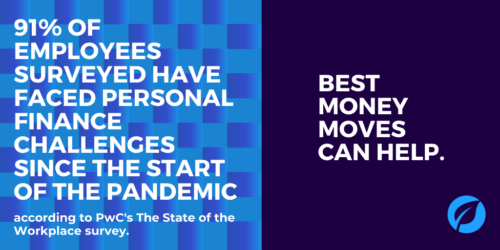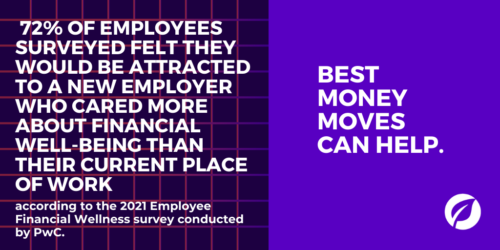
DEI & Financial Wellness: Bridging the Retirement Race Gap
According to a report by Morgan Stanley, white retirees have seven times the retirement savings of Black retirees, and five times the retirement savings of Latinx retirees, at work. Employers can help bridge the race gap. Start with a focus on employee financial wellness and equity.
What is the retirement race gap?
The retirement race gap is the disparity in retirement preparedness between Black Americans and Americans of color, and their white counterparts.
The retirement gap is fueled by inequality in the workplace
Black and Latinx employees are paid 26 to 39 cents less for every dollar that white employees make. However, when you factor in gender and race, Black and Latinx women are the least prepared and secure for retirement. For each $1 earned by white men, Latinx and Black women make 57 and 64 cents, respectively.
The racial wage gap often leads to the retirement race gap because earning less over one’s entire career stifles growth and security into retirement. Companies can address these disparities by taking a deeper look at their own equity and compensation practices.
How to close the retirement race gap, while improving financial wellness and DEI
Research from T. Rowe Price suggests that the workplace is where most employees look for advice for their lifetime financial goals, and this is equal across races. However, the level of financial stress and support differs across races, and the trend continues well into retirement. Companies can support employees’ financial goals and disrupt inequality by addressing the retirement race gap. Moreover, doing so prioritizes employee financial wellness with a DEI approach.
1. Set fair, equitable hiring practices and promotion opportunities
Whether it be name bias or stereotyping, hiring discrimination helps concentrate people of color into jobs and industries less likely to offer retirement benefits. In such industries — accommodation, food and waste — less than 40% of workers are offered retirement benefits, according to Dr. Nari Rhee from UC Berkeley.
Companies can help close the retirement race gap by offering unconscious bias training and analyzing how it affects the hiring process. Some employers have taken it a step further and require applicants of color to be interviewed for all internal and external positions.
2. Host company incentives, like match contributions, to encourage benefits use
Events, contests and webinars can be an easy way to encourage employees and teach them about 401(k) tax benefits. A leading incentive that enhances employee engagement and loyalty is a match contribution program. Employees often see match contributions as an investment in themselves and their financial futures. And knowing retirement funds will be matched, employees are increasingly motivated to save.
3. Add financial wellness programs and education to employee benefits
Employees have different levels and causes of financial stress, so naturally, they each have different financial goals. Financial wellness programs can offer personalized help to address employees’ most pressing financial stress. Whether through 1:1 coaching and detailed calculators, financial wellness programs can help employees develop financial literacy and confidence, as well as money management skills.
4. Address the retirement race gap head-on and use 401(k) auto-enrollment to increase participation
If you already offer retirement benefits, consider auto-enrollment for all employees. Studies show that auto-enrollment substantially increases employee participation because employees are unlikely to opt out. Once enrolled, employees will likely make an effort to educate themselves on 401(k)s and contribute, and employers can facilitate such learning.
5. Track progress and revisit company goals annually
Closing the retirement race gap will not happen overnight; however, with continuous work and dedication, companies can curtail the wealth disparity. Keep track of company progress and engage employees for feedback — see how new initiatives work, and what old practices may need revisiting. It’s important to check in annually to take stock of progress made and opportunities for change.
Looking for a financial wellness solution? Consider Best Money Moves.
Best Money Moves can help your employees address their financial stress and become prepared for retirement, regardless of their stage in life or previous money habits. Best Money Moves offers personalized financial wellness resources and education, focused on solving your employees’ pain points. The program uses artificial intelligence and a human-centered design to measure employee financial stress and then dial it down with personalized solutions. Our budgeting tools, personal finance guidance and more help employees make more informed financial decisions and reduce their overall stress.
To learn more about Best Money Moves Financial Wellness Platform, let’s schedule a call. Contact us and we’ll reach out to you soon.









